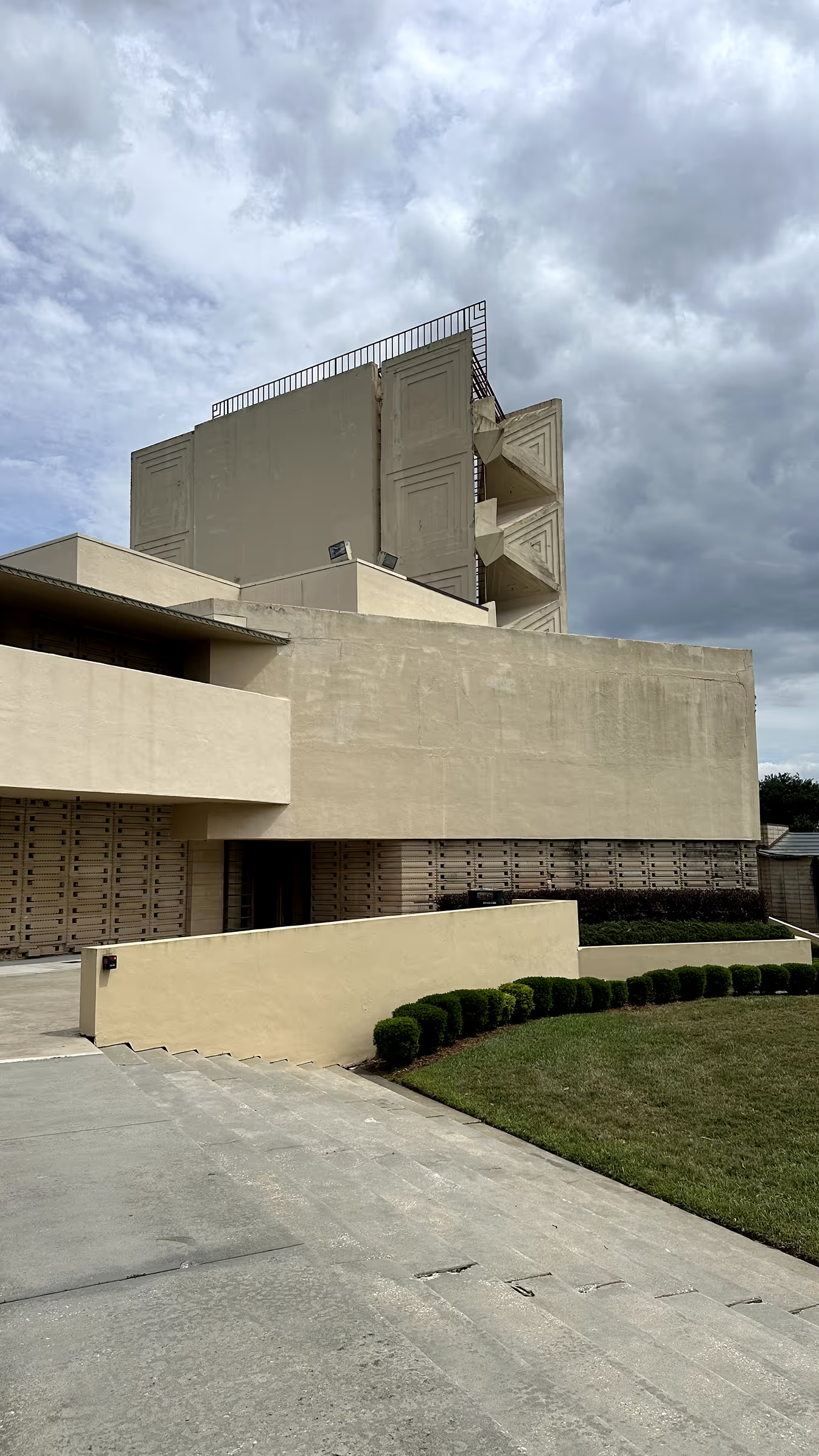July 26, 2025
Largest one-site collection of Frank Lloyd Wright architecture
As part of our research into Florida’s architectural language, we visited Florida Southern College in Lakeland — the site of the most extensive single collection of Frank Lloyd Wright buildings.
In 1938, Wright, then 70 years old, arrived on campus. At that time, the site was nothing more than an empty citrus grove with a large hill sloping down to Lake Hollingsworth. It wasn’t typical flat Florida terrain, and that difference sparked Wright’s imagination. He called the project “a child of the sun,” envisioning buildings that would rise directly from the landscape, shaped by the light and contours of the land.
Out of the ground and into the light.
Between 1938 and 1958, Wright designed eighteen buildings for the campus; twelve were built during his lifetime, with an additional structure — the Usonian Faculty House — completed decades later based on his original plans. The campus includes the Annie Pfeiffer Chapel, the first and most iconic building, with a striking central tower made from textile blocks — a method Wright developed using patterned concrete blocks assembled almost like a giant mosaic.

Wright’s work at Florida Southern pushes the idea of organic architecture to an extreme: structures are low, elongated, with deep cantilevered overhangs to protect from the Florida sun and breezeways that connect the entire campus in a network of shaded paths.
Many of the geometric patterns used across the buildings — including the cut-out motifs in the esplanades — are inspired by Mayan architecture. Wright first saw plaster casts of Mayan ruins at the 1893 World’s Columbian Exposition in Chicago, and the bold, rhythmic patterns stayed with him throughout his career. These references give the campus a futuristic, timeless quality. Wright’s architecture later became an influence on set design for films like Blade Runner, where monumental, sculptural structures dominate the environment.
{gallery:flw-campus}
A key stop during our visit was the Usonian Faculty House. Originally conceived as part of a larger plan for affordable faculty housing, only one was eventually realized. Built in 2013 with help from MIT engineers, the house follows Wright’s Usonian ideals: one-story, low-pitched roof, strong indoor-outdoor connection, and modular concrete construction. Although created 60 years later, it fits seamlessly into the campus, proof of the consistency of Wright’s vision.
{gallery:flw-usonian-house}
Florida Southern is still a functioning college. Students walk daily through the spaces Wright imagined — under the low ceilings of the esplanades, across the patterned concrete pavers, between groves of old citrus trees and live oaks.